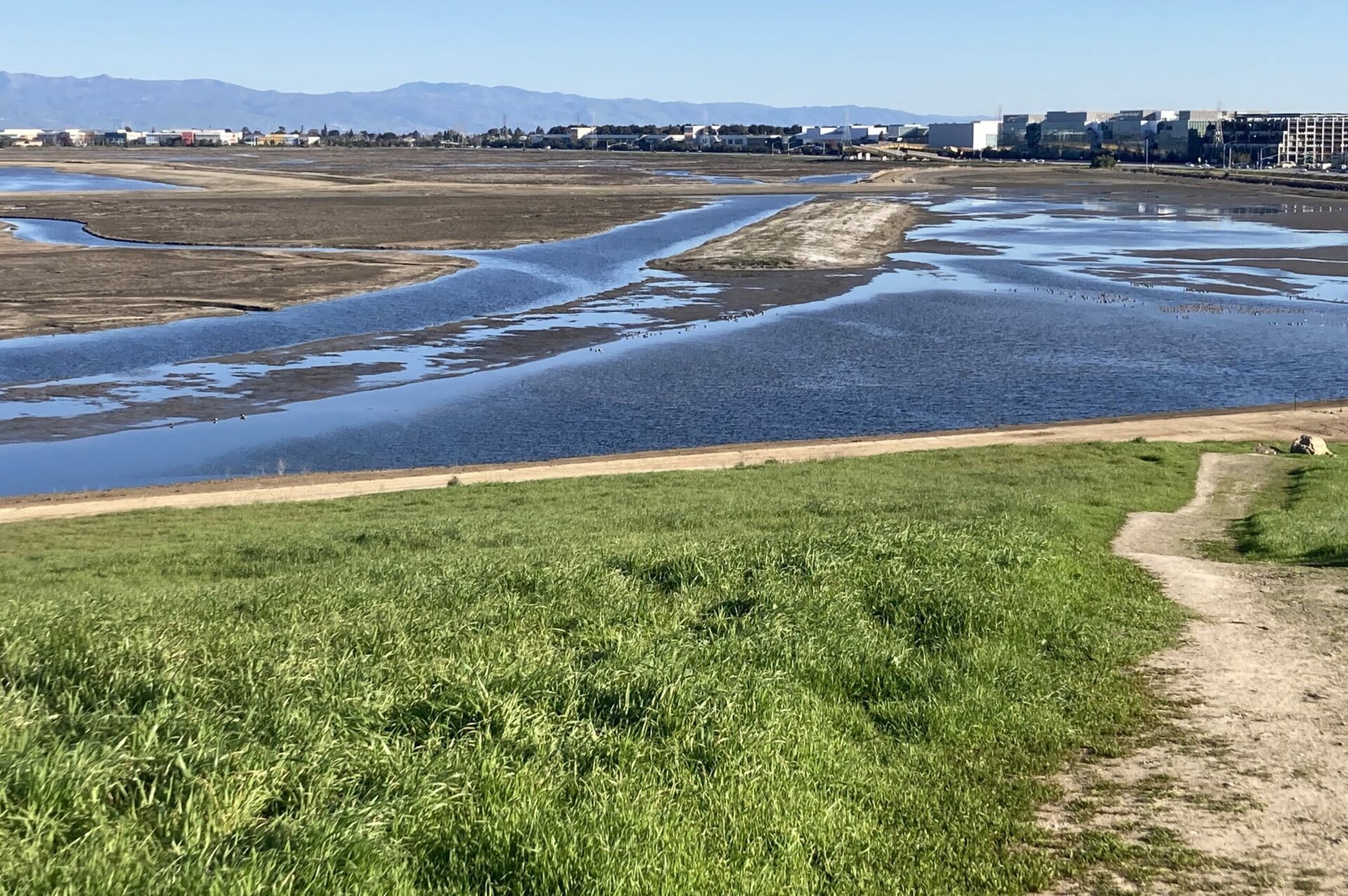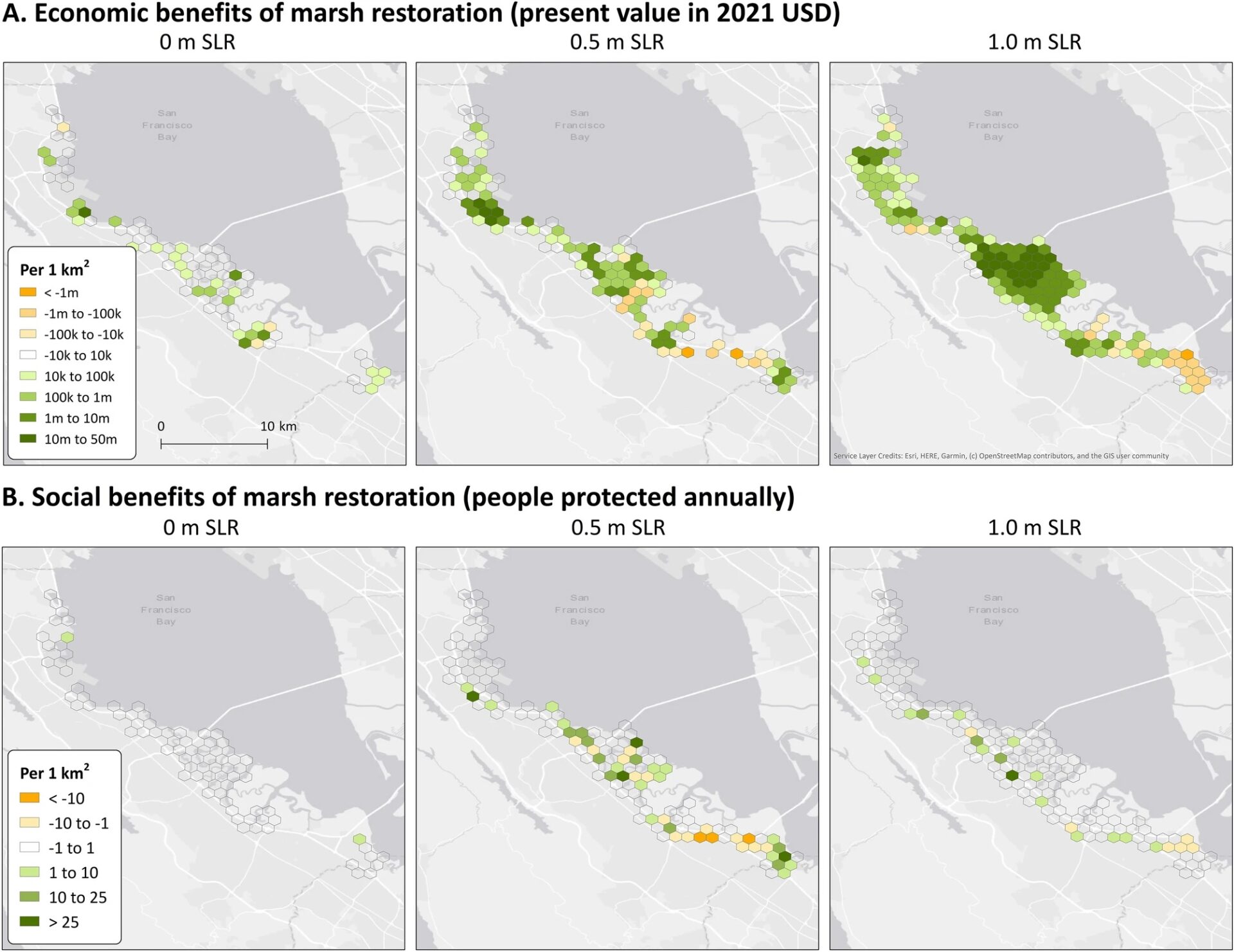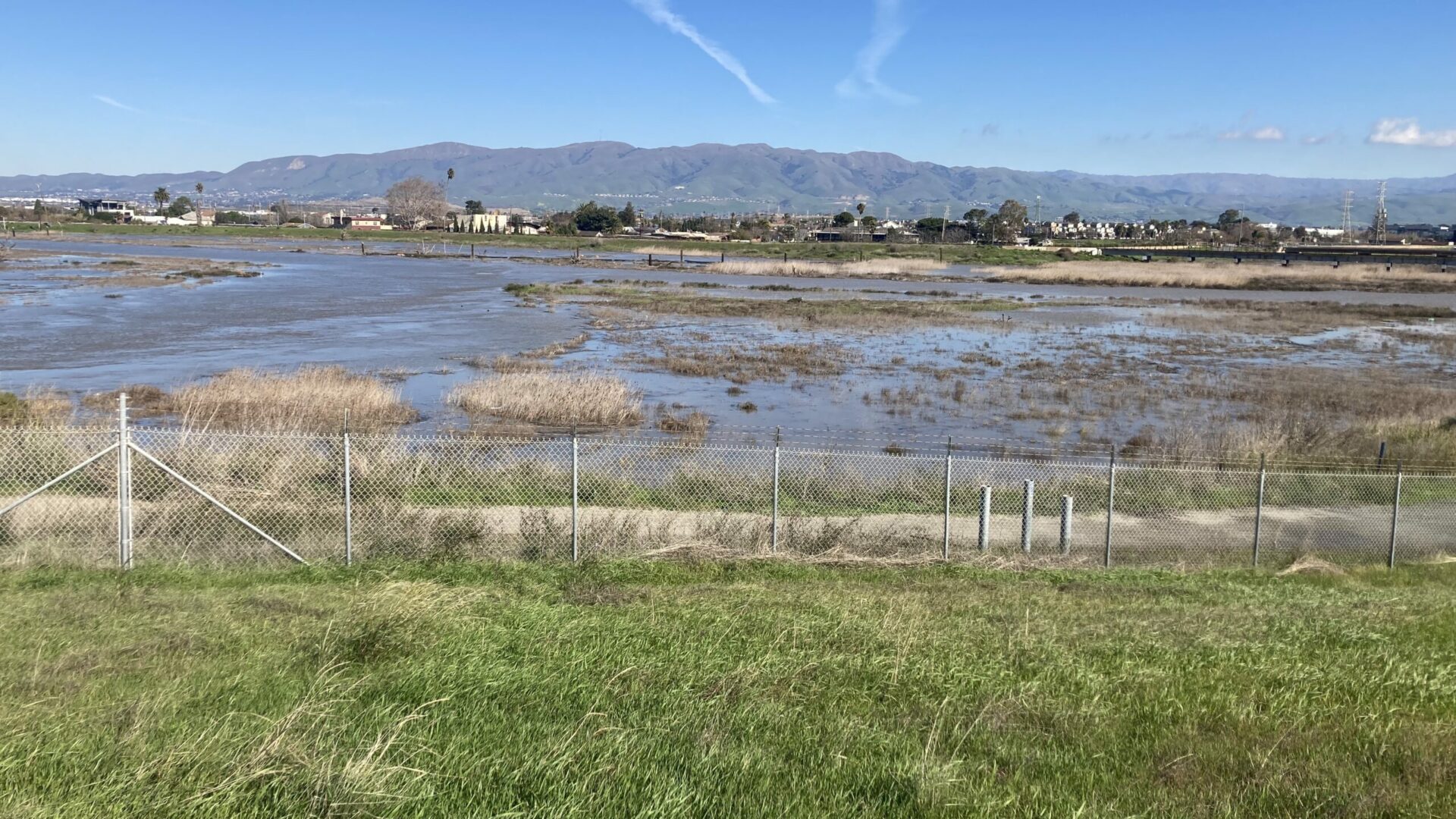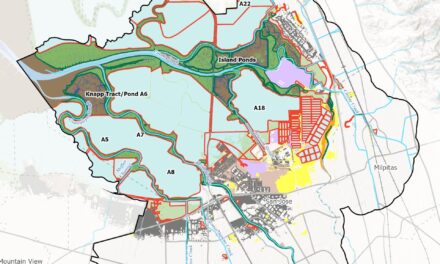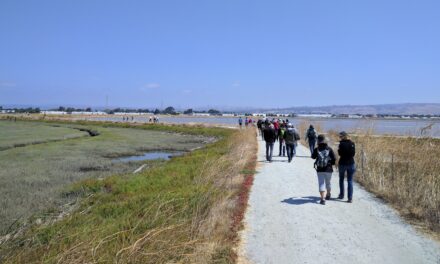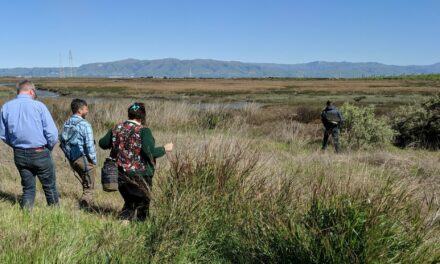Marshes Could Save Bay Area Half a Billion Dollars in Floods
What, precisely, is the value of habitat restoration? While answers tend to aim for pristine nature and thriving wildlife, one approach — recently published in the journal Nature — has assigned salt marsh restoration projects a dollar value in terms of human assets protected from climate change driven flooding. This novel approach uses the same models engineers use to evaluate the value of “gray” solutions such as levees and seawalls.
“You can really compare apples to apples when you put these green climate adaptation solutions on the same playing field as gray infrastructure,” says Rae Taylor-Burns, a postdoctoral fellow with UC Santa Cruz’s Center for Coastal Climate Resilience and lead author of the study.
Given that sea level is expected to rise by 1.6 to 7.2 feet (0.5 to 2.2 meters) by 2100, such value assessments are going to become increasingly relevant to the large population living and working near the low-lying shorelines of the San Francisco Bay Area. The region has already seen significant damage from floods when combined with high tides and storm surges. Statewide, if sea level rise reaches more than seven feet (2 meters), 675,000 people and $250 billion in property will be exposed to flood risk in the event of a 100-year storm.
Map of (A) economic and (B) social benefits from flood reduction of marsh restoration with sea level rise. Green colors represent positive present value and people protected and orange colors show negative present value and increased risk. Source: UC Santa Cruz
Other Recent Posts
Learning the Art of Burning to Prevent Wildfire
In Santa Rosa’s Pepperwood Preserve, volunteers are learning how controlled fires can clear out natural wildfire fuel before it can spark.
Martinez Residents Want More Than Apologies — They Want Protection
After a 2022 release of toxic dust and a February 2025 fire, people in the northeast Bay town are tired of waiting for safety improvements.
Weaving Fire Protection Out Of What’s Already There
A new Greenbelt Alliance report shows how existing vineyards, grasslands, and managed forests can slow wildfire and save vulnerable homes.
Fall Plantings Build Pollinator Habitats in Concord
Community groups, climate advocates and a church are coming together to plant pollinator gardens as monarchs, bees see population declines.
Newark Needs Housing, But Could Shoreline Serve A Higher Purpose?
The Bay Area needs more affordable housing, but would 196-homes or a buffer against sea level serve local needs better in the years ahead?
Who Will Inherit the Estuary? Training for a Rough Future
The six-month program teaches students aged 17 -24 about the challenges facing communities around the SF Estuary, from Stockton to East Palo Alto.
Split Verdict Over State of the Estuary
Habitat restoration and pollution regulations are holding the Bay steady, but the Delta is losing some of its ecological diversity, says SF Estuary Partnership scorecard.
Volunteers Catch and Release Tiny Owls For Science
In Santa Rosa, citizen scientists capture northern saw-whet owls to help further research on climate impacts to the bird.
Antioch Desalination Plant Could Boost Local Water Supply
The $120 million plant opened this fall and treats 8 million gallons of brackish water a day, 75% of which is drinkable.
How Cities Can Make AI Infrastructure Green
Data centers fueling AI can suck up massive amounts of energy, water and land, but local policies can mitigate the impact.
The Bay Area filled or destroyed the majority of its 190,000 acres of historic tidal wetlands — natural buffers against waves, storms and sea level rise — over the last 200 years, with only 40,000 acres remaining by the 1990s. In recent decades, the region’s marsh extent has crept back up to 80,000 acres thanks to modern restoration projects (with 24,000 acres of additional restoration projects in the pipeline). Much of the region’s highly urbanized shore depends on complex gray infrastructure like levees, dikes, seawalls, and seawater pumping for flood protection.
However, according to Taylor-Burns, the current value of marsh restoration within her study area of San Mateo County is $21 million. Under current conditions, nearly half of the people benefiting from flood reduction due to restoration live in socially vulnerable census areas, the UC Santa Cruz paper stated. However that percentage would decrease as sea levels rise and the vulnerable are displaced — as the low-lying areas would be inundated, and the floodplain would expand into higher elevations and more affluent census blocks.
As sea levels rise, so do the financial benefits of marsh restoration: to over $100 million under conservative estimates of 1.6 feet (0.5 m) of sea level rise, and up to roughly $500 million given moderate 3.3 feet (1 m). Financial benefits are calculated by Taylor-Burns’ team using the input of a variety of local planners and government stakeholders. They utilized hydrodynamic models to determine flood depths and extents, and then used census and building stock data to determine the impact of the flood in dollar amounts and in terms of people impacted. Countywide, the flood reduction benefits of salt marsh restoration would increase by a factor of 23 given 1.0 m of sea level rise.
Taylor-Burns says the evaluation of benefits is likely conservative, because it did not consider co-benefits to the restoration — such as positive impacts on recreation or water quality, the paper notes. Likewise, it did not consider benefits to endangered species.
“If you think about quality habitat for animals, that is likely to be large expanses where they can be separate from the built environment,” Taylor-Burns says. “The restoration that could benefit endangered species might not be in the same place as those that would provide the greatest flood risk reduction.”
South Bay salt pond restoration project site near shoreline development. Photo: David Hasling
Even in terms of dollars, some restoration projects would deliver even higher benefits, based on what infrastructure is nearby — such as the narrow fringe of restored marsh near the San Francisco Airport which provides a present value of $900,000 per hectare.
“Small restorations that are adjacent to, say, a Google campus or densely developed suburbia would offer more risk reduction benefits than larger island restorations,” Taylor-Burns says. “But in a nutshell, the findings show that marsh restoration can play a role in reducing flood risk in the bay pretty substantially.”






